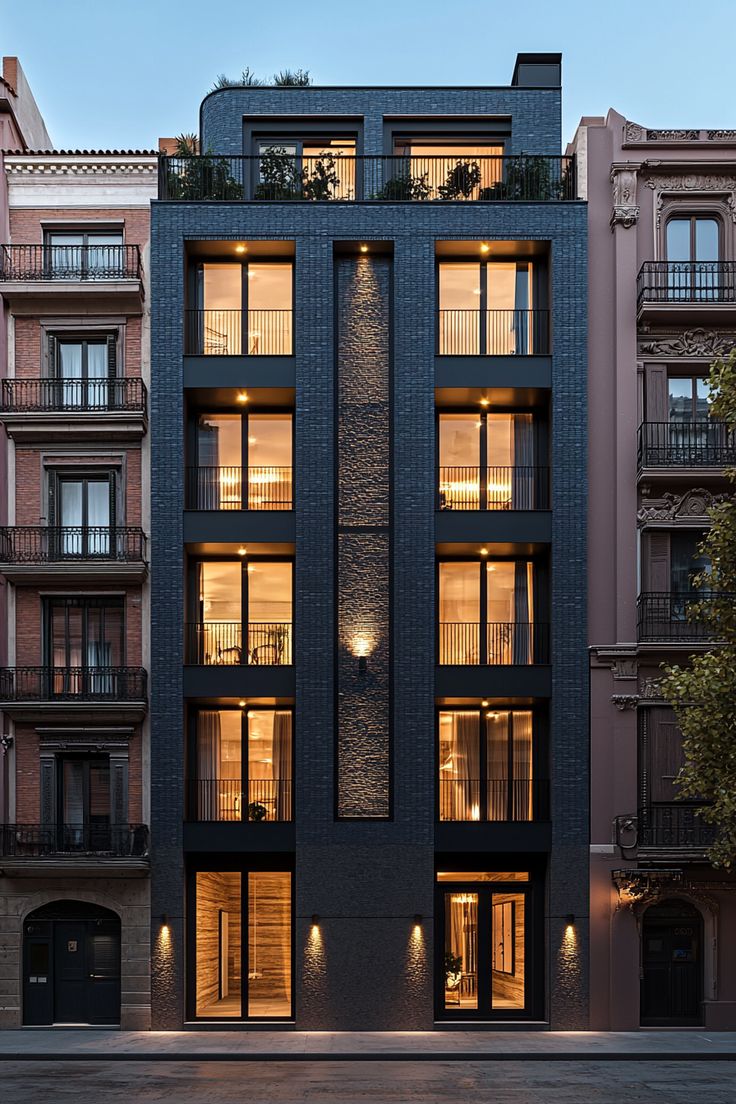Home • Article Details


Engineering offices
How do modern architectural designs affect thermal comfort and lighting in the home?
Architectural design plays a critical role in shaping the quality of life within residential and commercial buildings. A building is not merely a shelter; it significantly impacts the well-being of those living or working inside. Good design can enhance comfort and well-being, while poor design can cause stress and discomfort. Understanding how architectural design influences both the psychological and physical comfort of residents is crucial for improving their quality of life within architectural spaces.
1. Impact on Psychological Comfort
Natural Light and Open Spaces
One of the most significant factors affecting psychological comfort is natural light. Studies have shown that exposure to sunlight improves mood and reduces stress and depression levels. Designs that allow natural light to flow into interior spaces, such as large windows and open areas, contribute to enhancing psychological well-being by fostering a sense of positivity and openness.
Colors and Materials
Colors used in design also play a major role in psychological states. Lighter colors like white and light blue evoke a sense of calm and relaxation, while warmer colors like red and orange may stimulate activity and energy. Natural materials such as wood and stone enhance feelings of comfort and connection with nature, helping to reduce stress and anxiety.
Comfort and Privacy
Good design ensures the provision of privacy, which is essential for psychological comfort. Ensuring designated private areas respected by others can minimize feelings of pressure or discomfort. Additionally, quiet zones contribute to a sense of security and overall well-being.
Connection with Nature
Being connected to nature has proven psychological benefits, such as reducing anxiety and improving mood. Including elements such as indoor gardens, plants, or scenic views in the design enhances a resident's sense of relaxation and peace.
2. Impact on Physical Comfort
Adaptation to Climate Conditions
Physical comfort is heavily influenced by how well a building design controls the internal climate. Good thermal and acoustic insulation are crucial elements for ensuring comfort, especially in hot climates like those in Saudi Arabia. Keeping the temperature comfortable through proper insulation or integrated cooling systems significantly contributes to residents' physical comfort.
Ventilation and Airflow
Proper ventilation is another critical factor for physical comfort. Natural air circulation helps reduce feelings of suffocation or humidity, allowing residents to feel fresh. Designing buildings to allow natural airflow through openings or ducts enhances indoor air quality and physical well-being.
Comfortable and Flexible Spaces
Designing spaces that are spacious and flexible increases physical comfort. Narrow or overcrowded spaces can lead to discomfort and stress. On the other hand, open-plan designs and flexible layouts allow residents freedom of movement and contribute to physical comfort by enabling space to adapt to their needs.
Comfortable Furniture and Fixtures
Comfortable furniture such as sofas, ergonomic chairs, and adjustable beds directly impact physical comfort. Features that allow for adjustments, such as height-adjustable beds or chairs, contribute to physical well-being by preventing discomfort caused by poor posture during sitting or sleeping.
3. Sustainability in Design and Its Impact on Comfort
Sustainable design enhances life quality. Using environmentally friendly materials or green technologies, such as solar panels, reduces operational costs and improves the living environment. Buildings that integrate these technologies not only contribute to physical comfort by maintaining comfortable temperatures but also improve psychological comfort by providing a healthy and safe environment.
4. Architectural Design as a Tool for Enhancing Quality of Life
Ultimately, architectural design can be a powerful tool for improving residents' quality of life. By focusing on details such as natural light, good ventilation, open spaces, and appropriate material selection, design can significantly improve both physical health and mental well-being. Well-balanced designs that combine aesthetics with practical functionality create environments that are comfortable, safe, and conducive to residents' overall well-being.
The impact of architectural design on psychological and physical comfort is undeniable. By focusing on these factors, buildings can become more than just places to live; they transform into spaces that enhance physical and mental health, ultimately promoting the well-being of residents.